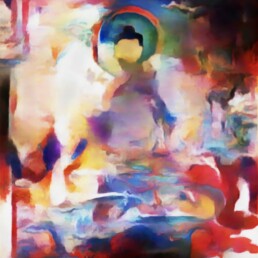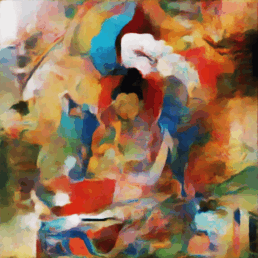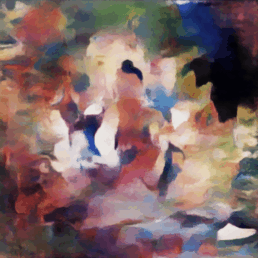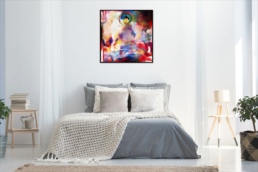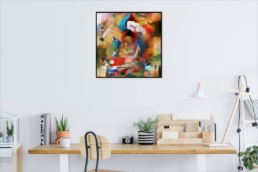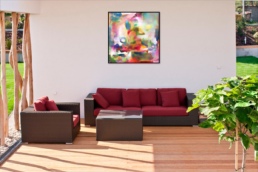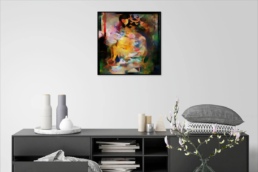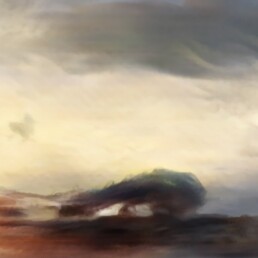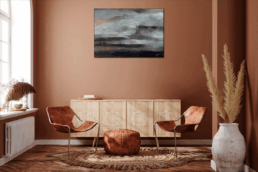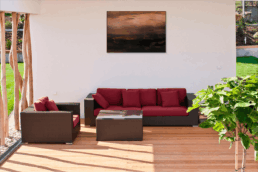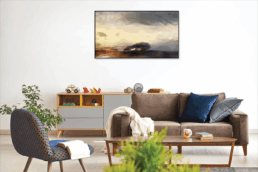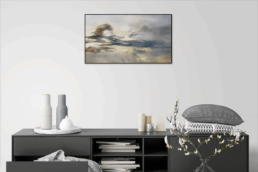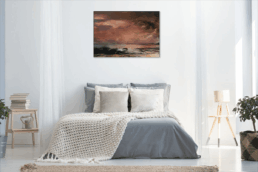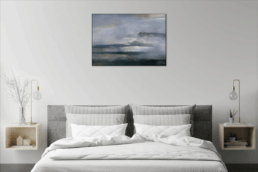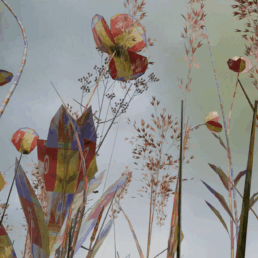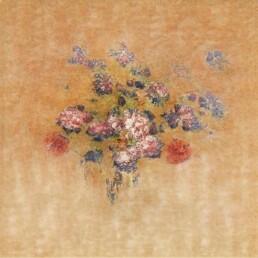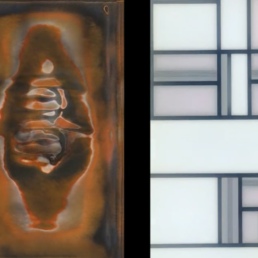Machinic Situatedness
Machinic Situatedness
Machinic Situatedness is a series of artworks that uses artificial intelligence (A.I) to explore the subject ‘cultural situatedness’ and influences in the genre of AI art.
These works are created by an A.I drawing inspiration from Budhhist painting styles to create an abstract, dream like output using GANs.
This series asks the questions- what is an AI machine’s cultural underpinning and how can we broaden its scope? These draw a lot of reference from Nam June Paik’s TV Buddha work, here alluding to the cycles of transcendence which we undergo as a species, continuous cycles of trying to become something more than ourselves, which we are now channeling through the evolving role of AI in our lives and AI itself is by learning more from us.
Latent Landscapes
Latent Landscapes
Medium: Custom trained AI Model Video. Year- 2021. Dimensions Variable
For this series of works, i amass a large collection of landscape paintings from the WikiArt archive to train my AI on. The outputs created capture a dream like imagination of landscapes – there’s an immediate sense of recognition, but the physics and compositions of the landscapes deviate from the obvious, drawing one’s attention in. To highlight this uncanniness, i take these static outputs from the machine and animate the landscapes, adding subtle, realistic motion to these non-standard compositions, to push this blurring between digitally imagined and natural realities. These AI imagined and animated works of the otherwise traditional art theme of landscapes, speak of our ongoing transition into digitally native beings, where we imagine digital alternate realities of everyday existence and then bring them to life.
Land(ing) Page
Land(ing) Page
Medium- Virtual Reality. Year- 2022.
In this work, the artist creates a 3D world of a poppy field. Upon closer inspection, it’s revealed this world is entirely made up of tiny videos playing. These are advertisement videos most money has been spent on in India over the last 2 years, sourced from the Facebook API. We are losing our natural habitat to one of media today, constantly surrounded and increasingly immersed in it. Advertisements have been the mechanism of luring us into the addiction of free media, as technology giants continue to carry out a ‘data-grab’ akin to the land-grab of 19th century colonizers, as if it were simply there for the taking and profiteering of, creating a level of influence, addiction and displacement of the natural, that overtakes our entire sense of ‘reality’. Technology giants are using individuals’ data to fund ‘digital colonialism’, while addicting us to the idea of free media and mindless scrolling (much like poppy addiction).
(Un)Still Life- Icon and Fetish
Month: April 2025
(Un)Still Life Video Work
Medium- Digital Video from Custom Trained AI Model. Year- 2021. Dimensions- Dimension variable.
This work presents a study of still-life aesthetics through the lens of artificial intelligence computer vision. Positing the question, can machines be taught aesthetics, here the artist trains a machine to look at thousands of still-life paintings, some in their entirety, and some in their details, to try and guide a machine to learn both composition and the painterly nuances of aesthetic. This work tries to start to teach AI the conceptual distinction between the compositional and the painterly. In any painting what is the relation of the part (as fetish) to the whole (as icon)? How can one teach a computer compositional structure and painterly texture?
Through this training, the machine is able to abstract out a relational sense of form, color, composition and produce outputs that resemble an uncanny likeness, yet the obvious departure to (real) life, very similar to this moment of digital transition that we are living in. For the video work, the artist uses this learning of the machine, across the icon and fetish, to interpolate from the fetish to the icon to the fetish, in a seamless morphing of varying detail levels of still life paintings. The work highlights the increasing digitization of natural ecology too- and the need for rapidly changing media. Still Life (the artistic subject of centuries) has become (Un)Still in today’s times.
Still Life: Icon and Fetish
Medium- Archival Print on Canvas. Year- 2021. Dimensions- 54 inch x 54 inch.
A grid artwork is created, where for the central work, the AI develops a sense of form from studying examples of whole paintings in its dataset of European still lives of floral arrangements. In the surrounding works, the AI develops its aesthetics by only studying random details in the still life paintings, where i randomly zoom into the paintings and limit the region the AI trains on. I further create a distinction for these, by altering the training process for both, using a slower learning rate for the central piece (allowing larger time for the AI to learn details) and faster learning rate for the outer pieces (not giving the AI enough scope to pick up on details).
An experiment in understanding computer vision (and an attempt towards advancing the field of AI art), this work tries to start to teach AI the conceptual distinction between the compositional and the painterly. In any painting what is the relation of the part (as fetish) to the whole (as icon)? How can one teach a computer compositional structure and painterly texture? This work tries to start poking into these set of questions.
Random Access Memory (RAM)
Random Access Memory (RAM)
Medium- Custom Trained AI Models Diptych Video, MP4. Year- 2024. Dimensions Variable.
In this 2 part video artwork, the artist looks at abstraction through the contemporary lens of machine aesthetics. Grounded in his practice of exploring machine intelligence and emergent aesthetics for over a decade now, the artist works with intergenerational and inter-geographical representations of abstraction art. Can we teach machines the aesthetics of abstraction, can we use its capabilities to lead an inquiry into the dialogue and departures between eastern and western approaches and aesthetics of it, between the figurative and surreal comparisons and influences of it. Can we build on the inherent nature of digital repeatability fused into it and evolve it to take contemporary forms of movement and dynamism. Above all, machine intelligence or ‘artificial’ intelligence based art in itself is a craft of abstraction drawing from data (or accessing inputs from machinic memory), combined with codified processes. In this work, the artist attempts to augment the aesthetics of abstractionism and our engagement with it through a machinic lens of enquiry to them.
